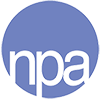In the third article in our series of six taking a detailed look at the PIVIT (Pig Improvement Via Information Technology) project, which is funded by the Rural Development Programme for England, the focus is on temperature and ventilation, and how to manage them to improve productivity and reduce costs
About 50% of UK slaughter pigs are finished in environmentally controlled accommodation, yet less than 10% of these systems are routinely monitored using automatic data capture. In most buildings, manipulating the ventilation controls temperature. In simple terms, reducing the ventilation rate brings an increase in temperature, while turning it up cools the building down.
In most cases, this is achieved using a negative pressure controlled inlet technique managed by a specialist computer know as a process controller, so integrating a monitoring system into the process is a simple next step. This allows the observation and data capture of other parameters too, such as energy use, water consumption and feed flow, and it’s relatively inexpensive to do.
Where temperature control is concerned, some sites already operate manual recordings and temperatures are regularly checked in every room/building to make sure everything’s working properly. However, this is labour intensive and the records are rarely analysed or reviewed. By continually recording/monitoring this data, operators can gain an insight into how their actions impact on the environment and subsequently pig performance. They can easily see if what they think is correct is actually benefiting the pigs in their care by the production response (growth/FCR).
This also provides a platform for generating specific knowledge about how a particular site operates, revealing what’s normal and where deviations occur.
PIVIT’s partner producers are learning a huge amount about the physical and financial aspects of environmental management. They can see how inputs such as ventilation are actually working, rather than how they have assumed they’re working, and most admit that continual environmental monitoring has proved a very valuable lesson and has reinforced the fundamentals of good pig husbandry.
A monitoring system uses the same sensors as those used by the controller to measure a building’s temperature. How a controller has been set up to control fans, inlet baffles, ACNV flaps and heaters – the tools used to achieve the desired temperature – is recorded. At the same time it will also measure the actual building/room temperature.
The controllers are networked in the same way that computers are linked together in offices (screened twisted pair or Cat 5 cables). This allows another computer to sit on the network and act as a logging and communications device. Where broadband internet access is available, the site network is permanently connected, which enables a constant data stream to be sent around-the-clock to an online database. If broadband internet is unavailable, a cellular modem will allow the site logger to connect with a remote computer to collect the site data.
The PIVIT farms, and others like them, use Barn Report to collect information on a daily basis. This system sends details to an online data warehouse where the end user, using bespoke Barn Report software configured for his/her farm, can access and collect data to review on their own PC.
The data is presented as charts for temperatures, water, feed and electricity that are simple to interpret, and the service is backed up by knowledgeable technical support with the total package costing £350/year per site. But making the most of this data relies on end user commitment and producers/managers must learn to interpret what the charts reveal and act on the results to gain commercial benefit.
Recent IT and internet advances now mean that the online database can be combined with automatic online analysis, which reduces the amount of data the producer has to see. It also means that the end user can choose to receive a text summarising the status of a particular building instead of having to study reports and statistical trends. This level of sophistication is an emerging technology in pig production, but the PIVIT project and developments under the Technology Strategy Board’s Sustainable Protein Production programme (TSP-SPP) to devise new pig sector-friendly IT equipment means the foundations are now laid to make this technology an integral and highly valuable pig management tool.
Through the PIVIT Project, a collaborative group of producers has been encouraged to make routine use of Barn Report, make comparisons and share experiences. This approach has been positively embraced by the businesses involved and is bringing considerable insight and learning into how the pig production process can be managed more effectively. Efforts are now being made to standardise the way the data is analysed and presented to improve comparisons and hopefully allow for formal benchmarking in the future.
Ventilation efficiency
The results from one business, where temperature, water, feed and electricity are being monitored on some of its units, has provided the company with more detail on how its buildings work.
Recent investigations into energy consumption in three of its 2,000-pig place finishing systems showed that one of the buildings uses twice as much electricity as the others. The temperature and ventilation of each building is set to achieve the optimum environment, and the productivity from each building is the same. Theoretically, it shouldn’t make any difference to energy use if the extractor fans are positioned in the side wall or the ridge of the building, but in this case the monitoring has shown a considerable disparity between the two.
By monitoring inputs and analysing the data, the farm has found that it takes more energy to produce pigs from one version of the ventilation system than it does the others, and that has financial and green’ implications.
With plans for expansion, this business has gained valuable knowledge, supported by conclusive evidence, about building efficiency and that will influence future investment decisions.
The data collected by the PIVIT project (now totalling some 70 million records) is freely available to any research institute that wants it – contact Hugh Crabtree (hugh@farmex.com) for more information.



